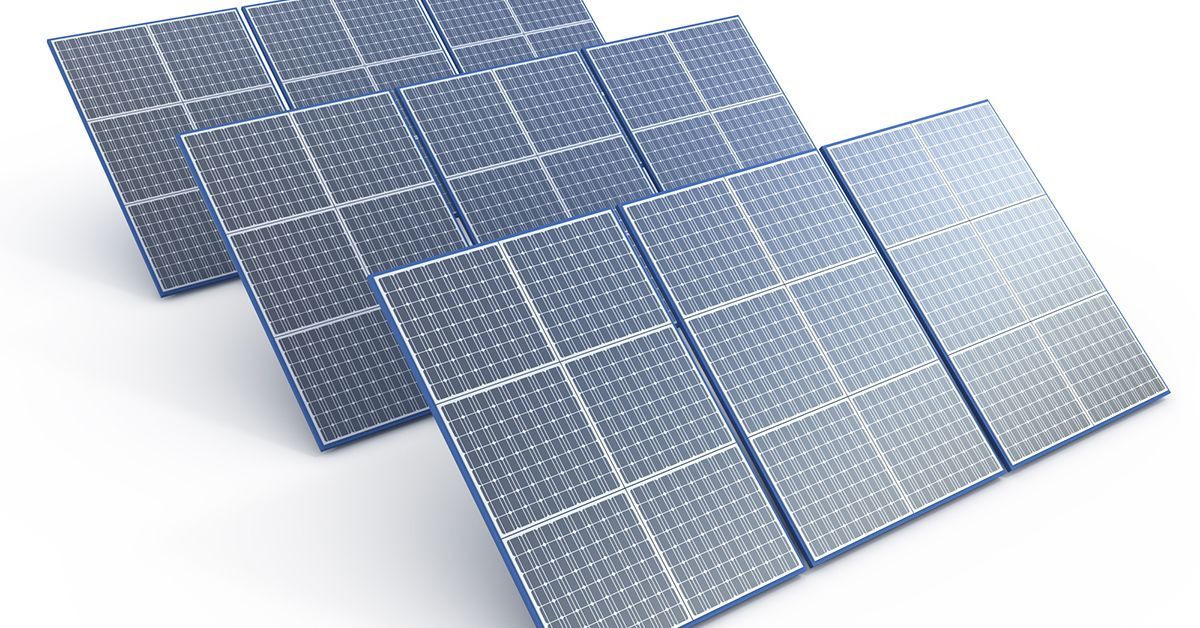Moving Perovskite Solar Cell Advancements From the Lab to the Manufacturing Floor
UC San Diego part of new collaborative research center to optimize development of tandem solar modules
Story by:
Published Date
Story by:
Topics covered:
Share This:
Article Content
The U.S. Department of Energy Solar Energy Technologies Office (SETO) announced that a team of researchers, led by MIT and including the University of California San Diego, has been selected to receive a $11.25M cost-shared award to establish a new research center that will advance the development of next-generation solar cells for commercial use.
A collaborative effort with lead industry participant CubicPV, solar startup Verde Technologies, and Princeton University, the center will bring together teams of researchers to support the creation of what are known as perovskite-silicon tandem solar modules. These are solar cells made of stacked materials—silicon paired with perovskites—that together absorb more of the solar spectrum than single materials, resulting in a dramatic increase in efficiency. Their potential to generate significantly more power than conventional solar cells could make a meaningful difference in the race to combat climate change and the transition to a clean-energy future.
However, current methods to create perovskite layers require painstaking rounds of design iteration and testing that have been difficult to reproduce at scale, inhibiting their development for commercial use. With current methods, there is also often a trade-off between stability and efficiency. The new research center will address these challenges by using a co-optimization framework guided by machine learning and automation. Researchers from industry and academia will work together to develop perovskite-silicon tandem solar modules that are co-designed for both stability and performance, with goals to significantly accelerate R&D and the transfer of these achievements into commercial environments.
“Urgent challenges demand rapid action. This center will accelerate the development of tandem solar modules by bringing academia and industry into closer partnership,” said MIT mechanical engineering professor Tonio Buonassisi, who will direct the center. “We’re grateful to the Department of Energy for supporting this powerful new model and excited to get to work.”
The center will be named Accelerated Co-Design of Durable, Reproducible, and Efficient Perovskite Tandems, or ADDEPT. The grant will be administered through the MIT Research Laboratory for Electronics (RLE).

David Fenning, associate professor of nanoengineering at UC San Diego, has worked with Buonassisi on the idea of merging materials, automation, and computation, specifically in this field of AI and solar, since 2014. Now, a central thrust of the ADDEPT project will be to deploy machine learning and robotic screening to optimize processing of perovskite-based solar materials for efficiency and durability.
Fenning’s lab will be responsible for the synthesis and characterization of prototype materials and solar cells using high-throughput tools. Fenning, who is part of the Sustainable Power and Energy Center at the UC San Diego Jacobs School of Engineering, will leverage his expertise in using advanced microscopy to probe inside perovskites at the nanoscale level and elucidate mechanisms of degradation.
“We have already seen early indications of successful technology transfer between our UC San Diego robot PASCAL and industry,” said Fenning. “With this new center, we will bring research labs and the emerging perovskite industry together to improve reproducibility and reduce time to market.”
Adam Lorenz, CTO of solar energy technology company CubicPV, stressed the importance of thinking about scale alongside quality and efficiency to accelerate the perovskite effort into the commercial environment. “Instead of chasing record efficiencies with tiny pixel-sized devices and later attempting to stabilize them, we will simultaneously target stability, reproducibility, and efficiency,” he said. “It’s a module-centric approach that creates a direct channel for R&D advancements into industry.”
“Our generation has an obligation to work collaboratively in the fight against climate change,” said Skylar Bagdon, CEO of Verde Technologies, which received the American-Made Perovskite Startup Prize. “Throughout the course of this center, Verde will do everything in our power to help this brilliant team transition lab-scale breakthroughs into the world where they can have an impact.”
Several of the academic partners echoed the importance of the joint effort between academia and industry. Barry Rand, professor of electrical and computer engineering at the Andlinger Center for Energy and the Environment at Princeton University, pointed to the intersection of scientific knowledge and market awareness. “Understanding how chemistry affects films and interfaces will empower us to co-design for stability and performance,” he said. “The center will accelerate this use-inspired science, with close guidance from our end customers, the industry partners.”
The MIT-led team was selected as a part of the SETO Fiscal Year 2022 Photovoltaics (PV) funding program, an effort to reduce costs and supply chain vulnerabilities, further develop durable and recyclable solar technologies, and advance perovskite PV technologies toward commercialization. ADDEPT is one project that will tackle perovskite durability, which will extend module life. The overarching goal of these projects is to lower the levelized cost of electricity generated by PV.
You May Also Like
Engineers Take a Closer Look at How a Plant Virus Primes the Immune System to Fight Cancer
Technology & EngineeringStay in the Know
Keep up with all the latest from UC San Diego. Subscribe to the newsletter today.




